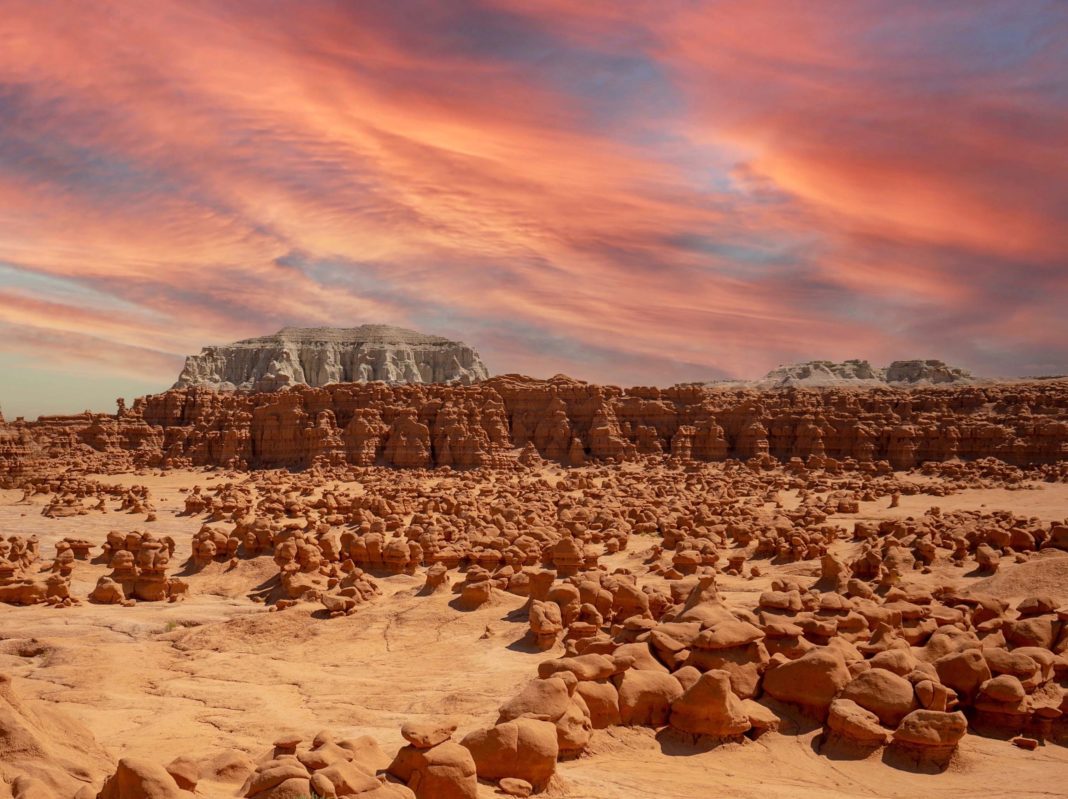Goblin Valley State Park is a state park in Utah, in the United States. The park features thousands of hoodoos, referred to locally as goblins, which are formations of mushroom-shaped rock pinnacles, some as tall as several meters. The distinct shapes of these rocks result from an erosion-resistant layer of rock atop relatively softer sandstone. Goblin Valley State Park and Bryce Canyon National Park, also in Utah about 310 km to the southwest, contain some of the largest occurrences of hoodoos in the world.
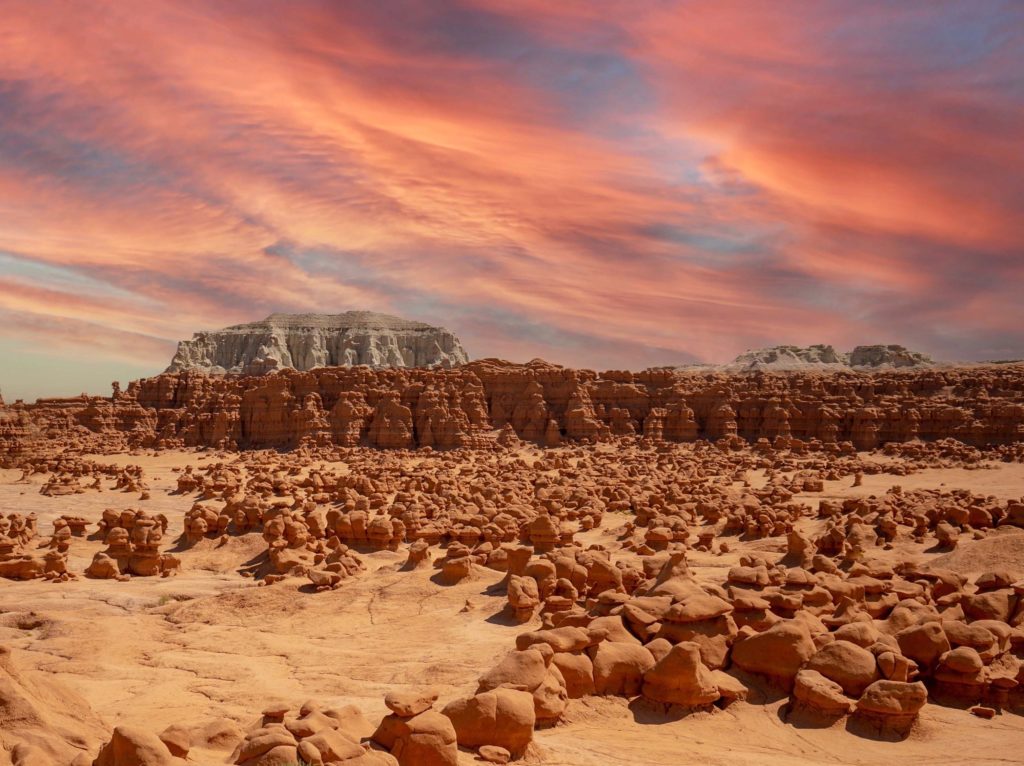
The park lies within the San Rafael Desert on the southeastern edge of the San Rafael Swell, north of the Henry Mountains. Utah State Route 24 passes about 6.4 km east of the park. Hanksville lies 19 km to the south.
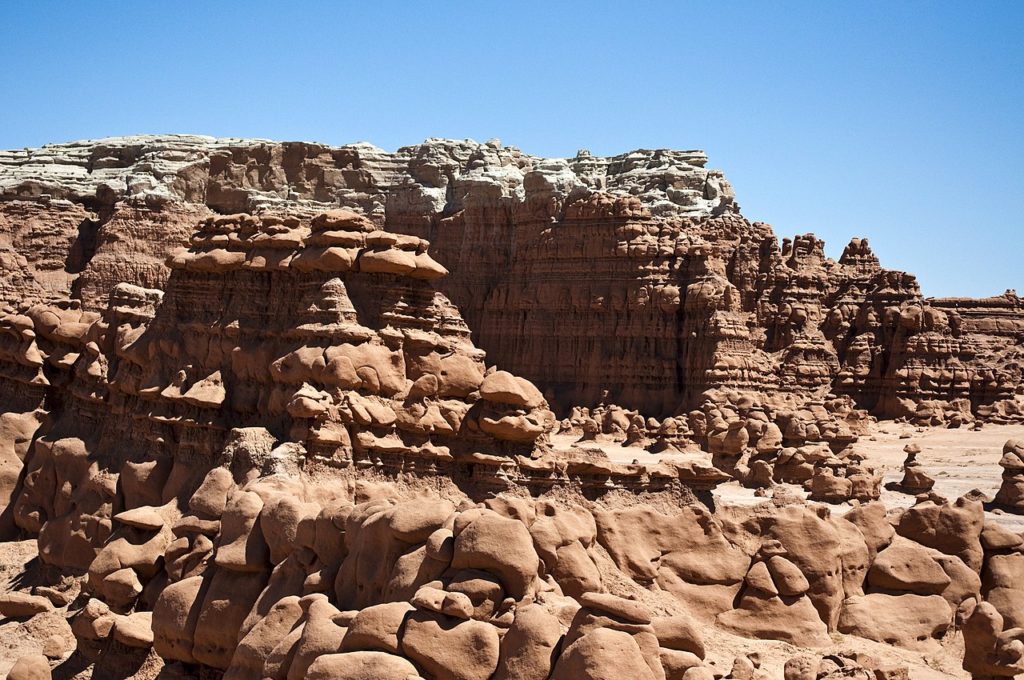
The unusual stone shapes in Goblin Valley result from the weathering of Entrada sandstone. The Entrada consists of debris eroded from former highlands and redeposited on a former tidal flat of alternating layers of sandstone, siltstone, and shale. The rocks show evidence of being near the margins of an ancient sea with the ebb and flow of tides, tidal channels that directed currents back to the sea, and coastal sand dunes.
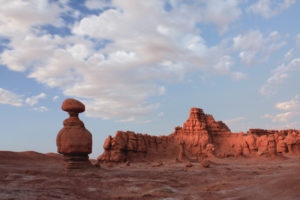
Joint or fracture patterns within the Entrada sandstone beds created initial zones of weakness. The unweathered joints intersected to form sharp edges and corners with greater surface-area-to-volume ratios than the faces. As a result, the edges and corners weathered more quickly, producing the spherical-shaped ‘goblins’.
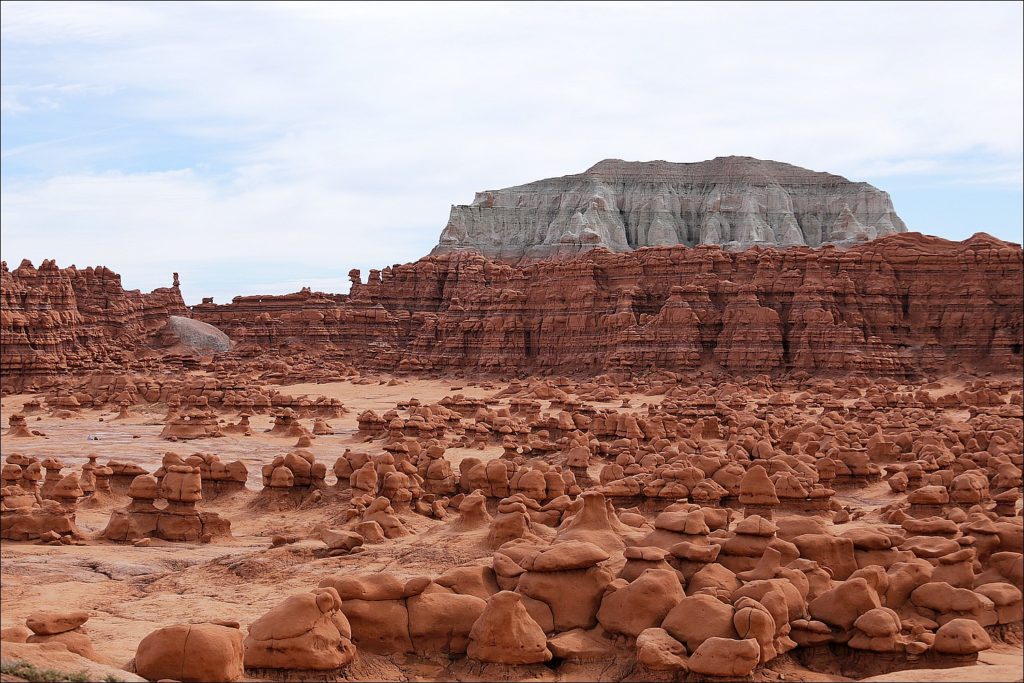
The valley opens year-round with no holiday closures. The Visitor Center is open daily from 8 am to 5 pm. However, during winter months (Nov – Feb), the Visitor Center may be closed for short periods while the staff is away at lunch or on park business, and occasionally may be closed all day if no staff is available.
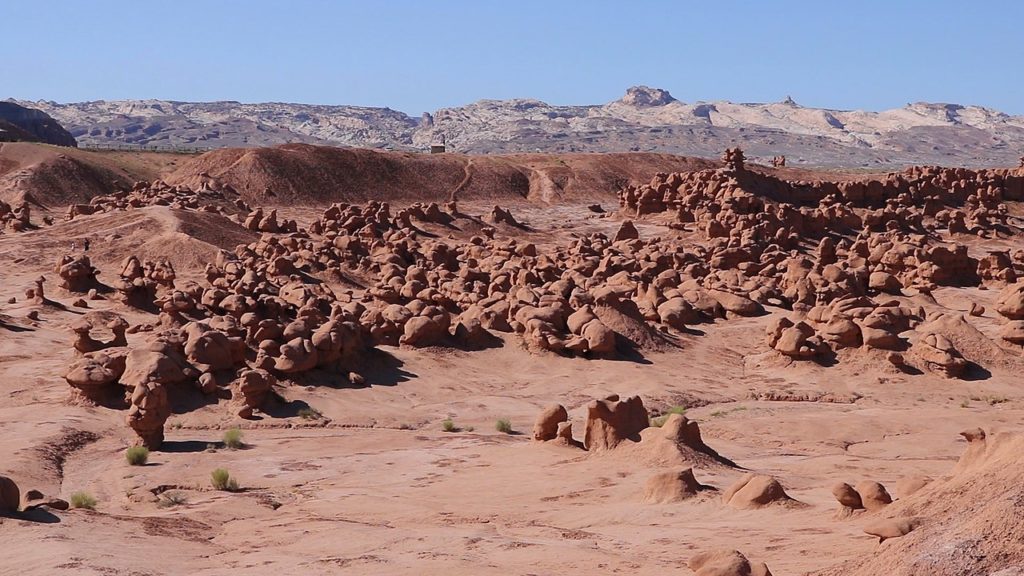
Goblin Valley was prominently featured in the movie Galaxy Quest (1999) as an alien planet. The eroded sandstone dunes in the valley inspired the design of the fictional planet’s rock monsters.
According to Wikipedia





